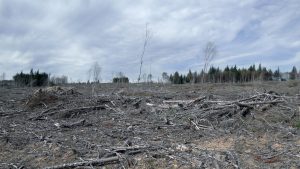
Could new technology result in penalties for practices that generate GHGs such as clearcutting and using primary forest biomass for bioenergy?
Our system incorporates dynaCERT’s proprietary technology which has been developed after years of extensive trials and research. dynaCERT now has the state-of-the-art capability to accurately track, measure and report on greenhouse gas emissions associated with many proponents operating in a diverse set of trades such as Residential, Industrial, Commercial, Power Generation, Railway, Marine, Aviation, On/Off Road and Agricultural applications.
The data collected will be used to determine the amount of greenhouse gas credits or offsets with a view to certify carbon credits in a scientific manner and moreover, do so quickly and in opportune time.
Conservative systems used today for analyzing and reporting greenhouse gas emissions characteristically rely on simply receiving emission related information from users. Consequently, the conventional systems are typically inaccurate and inefficient and often can not stand to audit nor reliability.
I was particularly interested in “Agricultural applications” – presumably, if the system could readily measure GHG emissions coming off agricultural fields and GHGs taken up during crop growth, it could do the same for forests and clearcuts.
Whether or not that particular Canadian venture succeeds, I think the important point is that such technology is on the way and will facilitate a much faster adjustment of our habits to reduce GHGs and climate warming via global agreements and financial markets, the ever-increasing effects of climate warming being a big driver for change. Such technology would also identify previously unrecognized or poorly documented processes that affect GHG emissions such as clearcutting and likely bring an end to arguments about whether or not forest bioenergy schemes should be considered carbon neutral.
Will Nova Scotia forestry be ready when the science & technology and the markets catch up with our GHG emissions, all hype aside? Will we have made enlightened decisions following the Independent Review of Forestry in 2017/2018 that would allow us to benefit rather than be penalized by new standards and markets?
Or will we remain entrenched in the self-congratulatory thinking exemplified by the recent announcement of a Nova Scotia-only Cap & Trade system?
——-
Tip of the hat to Carbon Pulse for this item.
